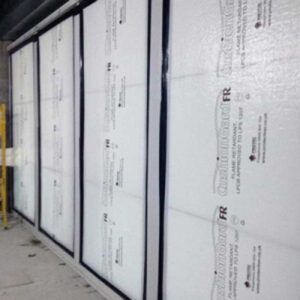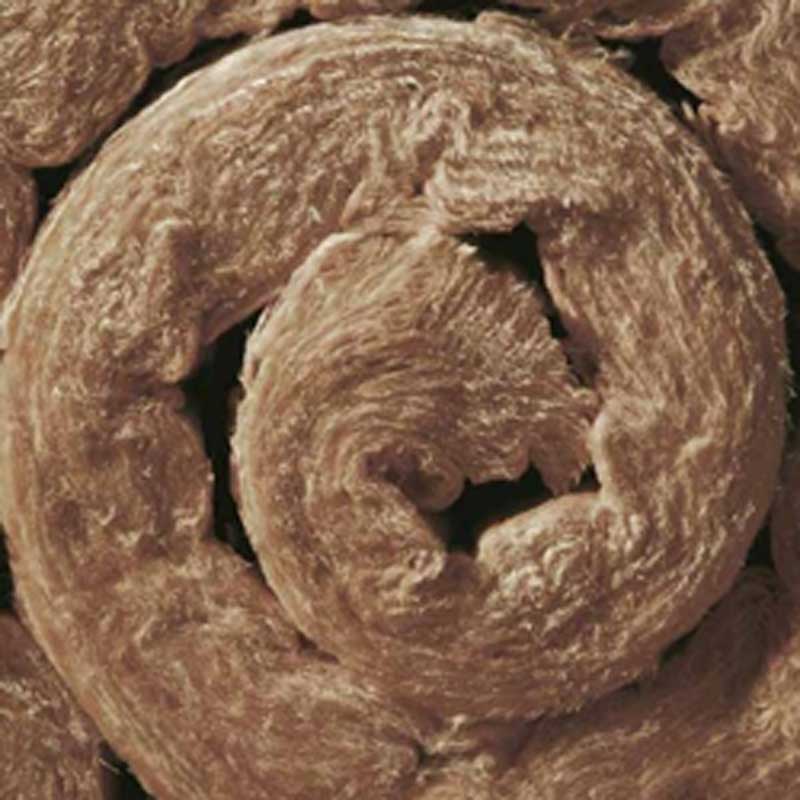In order to be used in a building, insulation products need to pass British Standard tests regarding fire protection. The two main standards under which such products will be assessed are BS 476-1: Fire tests on building materials and structures and BS EN 13501-1: Fire classification of construction products and building elements. The results of these tests are used by specifiers and contractors to determine the best fire rated insulation available for their needs.
The classification system defined in BS EN 13501-1 is typically the primary recognised standard in the construction industry. The process for classification under this standard involves a combination of up to five rigorous tests designed to assess the product on a range of characteristics, including combustibility, heat levels, flame spread and smoke release. Once tested, the product receives an official classification of its fire rating, known as a Euroclass rating.
Here at Insulation Superstore, we have a range of fire-rated insulation solutions available to order. But, before you choose your products, it’s important to understand the classification process and what each level means in terms of fire resistance and protection.
We’ve covered all that you need to know in our guide in terms of classifications and the types of insulation available so that you can make an informed purchase with safety in mind.

Table of contents
- A guide to the classifications
- Class 0 and Class 1 ratings
- Non-combustible insulation
- Other fire-rated insulation
- Final thoughts
A guide to the classifications
The BS EN 13501-1 classification comprises three ratings. The first is the main Euroclass rating, which will be the letter A1, A2, B, C, D, E or F. A1 is the highest level of performance, while F is the lowest. Flooring materials are followed by the abbreviation ‘fl’ (for example, A1fl).
Linear pipe thermal insulation products are followed by the abbreviation ‘L’ (for example, A1L). A1 products are classified as non-combustible. A2 products are classified as limited combustibility, and B to F are classified as combustible in ascending order.
| Classification | Definition | Description |
| A1 | Non-combustible | No contribution to fire |
| A2 | Limited combustibility | Very limited contribution to fire |
| B | Combustable | Limited contribution to fire |
| C | Minor contribution to fire | |
| D | Medium contribution to fire | |
| E | High contribution to fire | |
| F | Easily flammable | |
| Note: The descriptions above are a simplification of the current national and European Standards. It exclusively has an informative value and it has the only purpose to facilitate the understanding on the use of flameproof materials for insulation. Insulation Superstore is in no case responsible for the accuracy of the information and/or for any misinterpretation. | ||
The second classification relates to smoke emissions during combustion. This is indicated by a rating of s1, s2 or s3, from highest to lowest performance. Smoke emission classifications are not provided for products with an E or F overall rating.
The third classification relates to the level of production of flaming droplets/particles during combustion. This is indicated by a rating of d0, d1 or d2, from highest to lowest performance. E-rated products receive a d2 flaming droplet classification.
F-rated products receive none. A1-rated products are not given smoke emission or flaming droplet ratings, on the assumption that they do not contribute to fire growth or spread.
| Classification | Level | Description |
| Smoke emission during combustion | S1 | Quantity/speed of emission absent or weak |
| S2 | Quantity/speed of emission of average intensity | |
| S3 | Quantity/speed of emission of high intensity | |
| Production of flaming droplets during combustion | D0 | No dripping |
| D1 | Low dripping | |
| D2 | High dripping | |
| Note: The descriptions above are a simplification of the current national and European Standards. It exclusively has an informative value and it has the only purpose to facilitate the understanding on the use of flameproof materials for insulation. Insulation Superstore is in no case responsible for the accuracy of the information and/or for any misinterpretation. | ||
Class 0 and Class 1 ratings
Occasionally, a building insulation product may focus on a Class 0 or Class 1 rating. However, these classifications do not indicate the combustibility of the product, referring only to limited surface fire performance characteristics.
Class 0 is a rating defined in Approved Document B of the Building Regulations 1991. It combines two tests in the British Standard BS 476. The first assesses a surface’s contribution to fire propagation (BS 476-6) and the second assesses the spread of flames across a surface, including distance and time (BS 476-7).
Class 1 is a limited classification based on the test in BS 476-7 only. It is important to recognise the limited application of these classifications.
Non-combustible insulation
Non-combustible products are the best option when it comes to fire-rated insulation. A product can be described as non-combustible if it receives a Euroclass A1 rating under BS EN 13501-1. A product with a Euroclass A2 rating indicates “limited combustibility”, which will be appended with the smoke emission and flaming droplets ratings for further context.
In addition, a separate test for non-combustibility is defined in BS 476-4:1970: Non-combustibility test for materials and BS 476-11:1982: Method for assessing the heat emission from building products.
Examples of non-combustible insulation materials include cement, fibreglass (glass wool), stone wool (rock wool), glass foam and ceramic. There are several ranges of non-combustible insulation products available at Insulation Superstore.
Let’s take a closer look at the main ones.
Knauf provides multiple solutions for roofs, walls and floors, including Euroclass A1-rated glass mineral wool loft roll, insulation slab and cement board, and Euroclass A2-rated gypsum plasterboard.
Other options include Isover glass fibre and mineral wool rolls, Rockwool loft rolls and cavity barriers, SuperFOIL SFNC multifoil insulation, and Magply building panels.
Other fire-rated insulation
There are several more choices for fire-rated insulation available. Promat fire resistant boards are rated Class 0 under the Building Regulations, providing high-performance fire resistance in a slimline calcium silicate board. Several Gyproc plasterboards also carry the Class 0 certification. Class 1 fire rated insulation is available from Rockwool, Knauf, SuperFOIL and Gyproc.
Final thoughts
Fire-rated insulation is crucial for ensuring the safety and compliance of a building, particularly in areas prone to fire hazards. It provides a barrier against the spread of flames, smoke, and toxic gases in the event of a fire, helping to contain the blaze and minimise damage.
By meeting stringent fire safety regulations and standards, fire-rated insulation enhances the overall fire resistance of the structure, protecting occupants and property alike.
Bottom line:
Choosing the right fire-rated insulation class for your next project is absolutely crucial.
Please note: All content contained in this blog post has an exclusively informative value. It has only the purpose of facilitating the understanding of the use of flameproof materials for insulation. Insulation Superstore is in no case responsible for the accuracy of the information and/or for any misinterpretation. Please consult with a qualified insulation professional for advice on your particular project’s needs.















